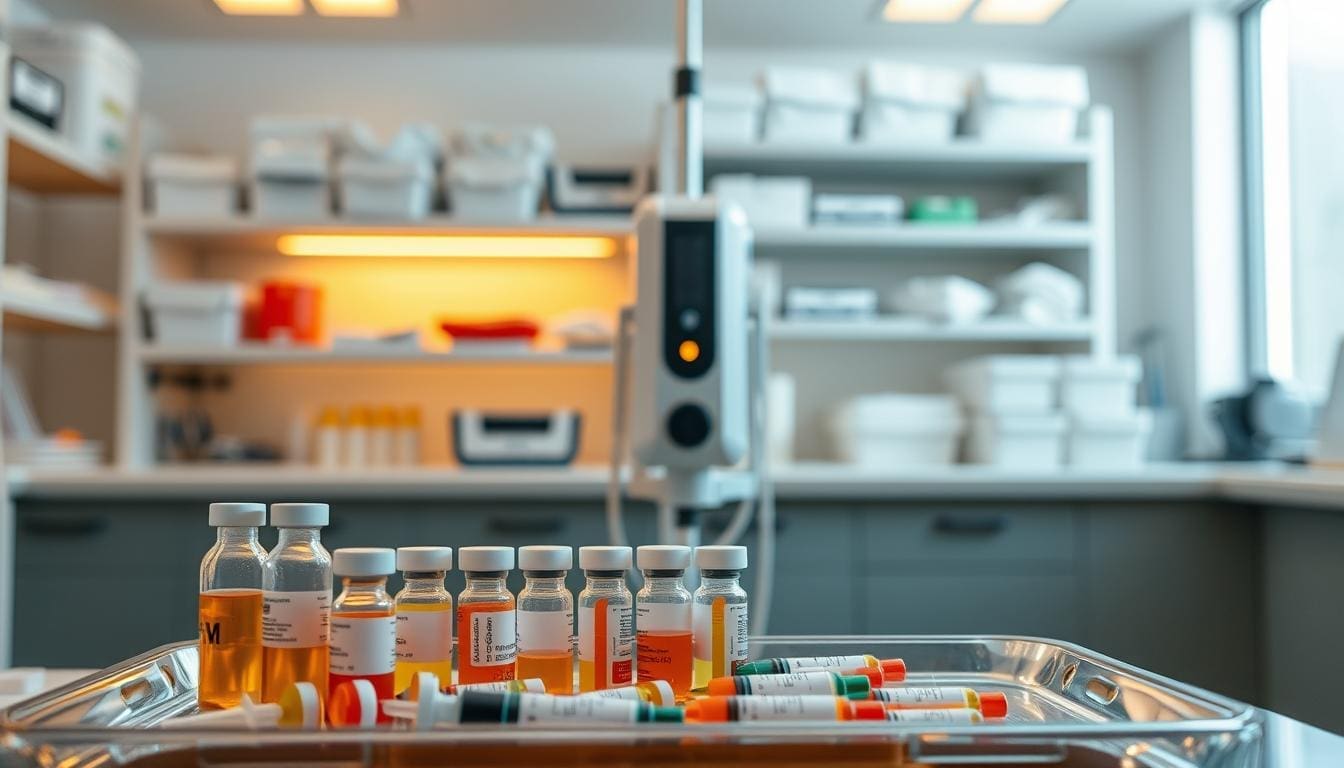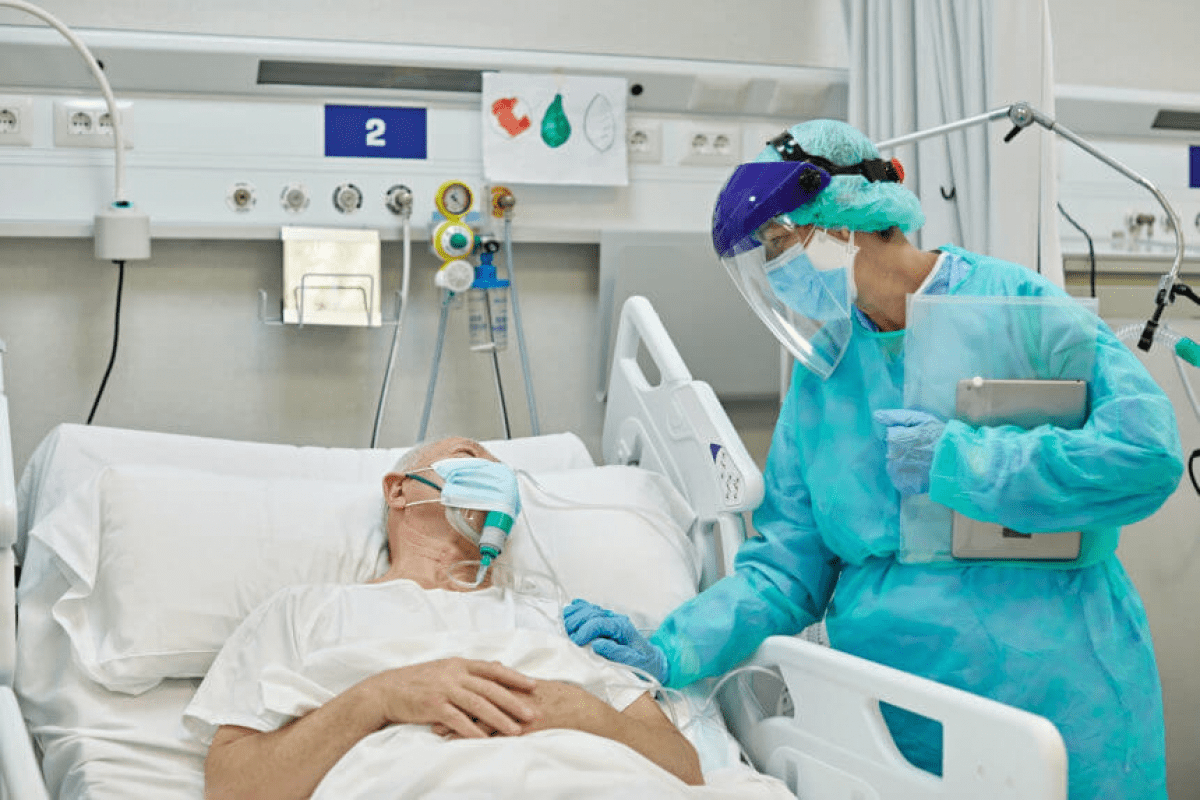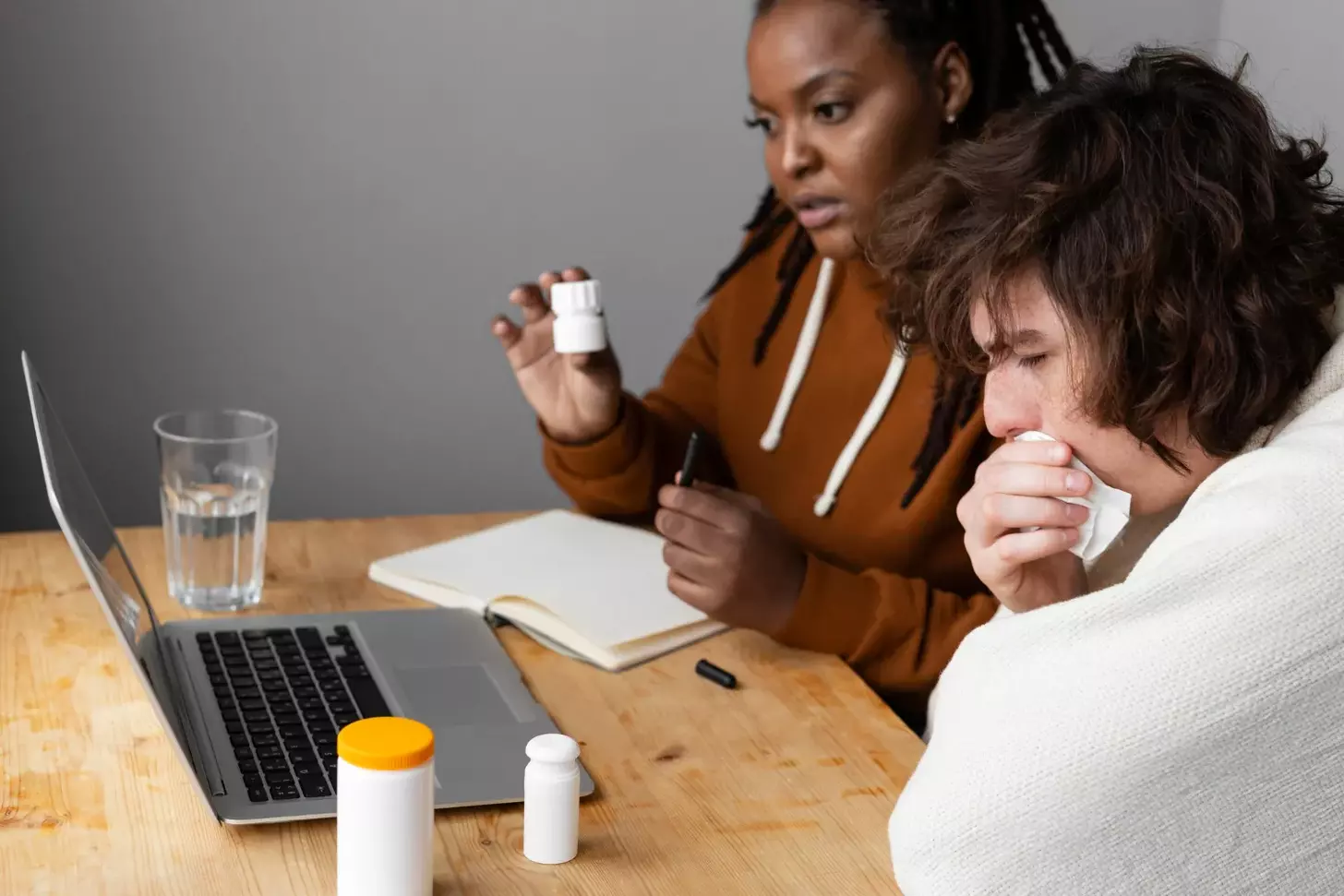Last Updated on November 27, 2025 by Bilal Hasdemir

After surgery to remove a tumor, patients often ask why more treatment is needed. This is where adjuvant therapy comes in. It’s an extra defense against cancer coming back. At Liv Hospital, we use the latest science and care for each patient, making sure every treatment choice is both smart and kind.
Cancer treatment is complex and very personal. Adjuvant therapy is extra treatment after the main treatment, like surgery, to lower cancer coming back risk. Our team works hard to give full cancer care, using many treatment options based on each patient’s needs. For more on our cancer treatment, check out our page on first-line treatment for oncology.
Key Takeaways
- Adjuvant therapy is an additional treatment given after primary cancer treatment.
- Its purpose is to reduce the risk of cancer recurrence.
- Various treatment options are available, tailored to individual patient needs.
- Liv Hospital provides patient-centered care, combining the latest evidence with compassion.
- Comprehensive cancer care is our priority, ensuring the best possible outcomes.
Understanding Adjuvant Therapy: Definition and Purpose
Adjuvant therapy is a treatment given after the main treatment to stop cancer from coming back. It’s a key part of cancer care. It aims to get rid of any cancer cells left behind after the main treatment.
The Medical Definition of Adjuvant Therapy
Adjuvant therapy is a treatment given with or after the main treatment to lower cancer coming back risk. This extra step is based on the idea that tiny cancer cells might stay in the body even after the main tumor is gone or treated.
Doctors say, “Adjuvant therapy is a vital part of primary treatments. It adds an extra layer of protection against cancer coming back.” (Source not available)
How Adjuvant Therapy Differs from Primary Treatment
The main difference between adjuvant therapy and primary treatment is their goals. Primary treatment aims to get rid of the main tumor. Adjuvant therapy goes after any tiny cancer cells that might have spread but are not seen by standard tests.
- Primary treatment focuses on eliminating the main tumor.
- Adjuvant therapy targets microscopic cancer cells that may have spread beyond the primary tumor site.
The Goal: Targeting Microscopic Cancer Cells
The main goal of adjuvant therapy is to get rid of tiny cancer cells left after primary treatment. By going after these cells, adjuvant therapy greatly lowers the chance of cancer coming back. This improves patient outcomes and survival rates.
“The use of adjuvant therapy has been shown to significantly improve survival rates in patients with various types of cancer, providing a vital layer of protection against recurrence.”
We know that adjuvant therapy is a key part of cancer treatment. It gives patients the best chance of long-term survival and lowers the risk of cancer coming back.
When Is Adjuvant Therapy Recommended?
Doctors decide on adjuvant therapy based on a patient’s cancer details. It’s often used after surgery for some cancers. This is to get rid of any cancer cells left behind.
Post-Surgical Applications
Adjuvant therapy is used after surgery to lower cancer return risk. It targets tiny cancer cells that might have spread. This method boosts survival chances in many cancers.
In breast cancer, treatments like chemotherapy or hormone therapy are used after surgery. For colorectal cancer, chemotherapy is common to kill leftover cancer cells.
Cancer Types Commonly Treated with Adjuvant Therapy
Many cancers are treated with adjuvant therapy, including:
- Breast cancer
- Colorectal cancer
- Lung cancer
- Melanoma
Adjuvant treatments vary by cancer type, stage, and other factors. For lung cancer, chemotherapy and radiation might be used together.
Factors That Determine Eligibility
Several factors decide if adjuvant therapy is needed. These include cancer stage, type, patient health, and biomarkers. A team of doctors looks at these to choose the best treatment.
The table below shows what affects adjuvant therapy choices:
| Factor | Description | Impact on Adjuvant Therapy |
|---|---|---|
| Cancer Stage | The extent of cancer spread | Advanced stages may require more aggressive adjuvant therapy |
| Cancer Type | The specific type of cancer | Certain types are more responsive to adjuvant therapy |
| Patient Health | The patient’s overall health and comorbidities | Patients with significant comorbidities may not tolerate adjuvant therapy well |
| Biomarkers | Specific genetic or molecular markers | Presence of certain biomarkers can guide the choice of adjuvant therapy |
The Science Behind Adjuvant Therapy
Adjuvant therapy is a big step forward in cancer treatment. It uses science to get rid of cancer cells left behind. This makes it key to better patient results.
How Adjuvant Treatments Target Residual Cancer Cells
Adjuvant treatments, like radiation therapy as adjuvant treatment, aim at tiny cancer cells left after main treatment. These tiny cells can cause cancer to come back. By getting rid of them, adjuvant therapy lowers the chance of cancer coming back, which is a big plus.
This method uses many ways to fight cancer cells. It’s important to match the treatment to the cancer for the best results.
The Concept of Micrometastases
Micrometastases are tiny cancer cell groups that spread from the main tumor to other places. They are a main target for adjuvant therapy. If not treated, they can grow into big cancer problems. Knowing about micrometastases helps us see why adjuvant therapy is so important in fighting cancer.
Biological Mechanisms of Different Adjuvant Approaches
Adjuvant treatments like chemotherapy, hormone therapy, and targeted therapy work in different ways. For example, chemotherapy kills fast-growing cells, while hormone therapy stops cancer cells from getting the signals they need. Adjuvant therapy is made just for the patient’s cancer, making treatment more effective.
By using these different methods, adjuvant therapy helps fight cancer from coming back. This shows how vital it is in today’s fight against cancer.
Adjuvant Chemotherapy: Process and Protocols
After surgery, adjuvant chemotherapy is key in fighting cancer. It targets tiny cancer cells left behind. This treatment is a big part of cancer care, aiming to kill any cancer cells that could come back.
Common Chemotherapy Drugs Used in Adjuvant Settings
Adjuvant chemotherapy uses different drugs for different cancers. Some top drugs include:
- Anthracyclines (e.g., doxorubicin): Good against many cancers.
- Taxanes (e.g., paclitaxel, docetaxel): Often for breast cancer.
- Platinum-based drugs (e.g., cisplatin, carboplatin): Common in ovarian, lung, and testicular cancers.
- Fluoropyrimidines (e.g., 5-fluorouracil): Used in colorectal and breast cancers.
The right drugs depend on the cancer type, stage, patient health, and past treatments.
Administration Methods and Schedules
Chemotherapy can be given in different ways, like IV infusion, oral pills, or both. How often and for how long varies. Treatments can be daily, weekly, or every few weeks, lasting months to a year or more.
| Chemotherapy Regimen | Administration Method | Typical Duration |
|---|---|---|
| AC-T (Doxorubicin/Cyclophosphamide followed by Paclitaxel) | IV Infusion | 3-6 months |
| FOLFOX (5-Fluorouracil, Leucovorin, Oxaliplatin) | IV Infusion | 6 months |
| Capecitabine | Oral | 6 months |
Managing Side Effects During Treatment
It’s important to manage chemotherapy side effects to keep patients feeling good. Side effects include tiredness, nausea, hair loss, and infection risk. We help patients with supportive care, like anti-nausea meds, growth factors, and nutrition advice.
Understanding adjuvant chemotherapy helps patients make informed decisions about their care.
Radiation as Adjuvant Therapy
Radiation therapy is now a key part of cancer treatment. It helps lower the chance of cancer coming back. This treatment is used after surgery or other main treatments. It aims to kill any cancer cells left behind that surgery can’t find or remove.
Types of Radiation
There are different kinds of radiation therapy used in adjuvant settings. External beam radiation therapy (EBRT) sends beams from outside the body to the tumor. Brachytherapy places radioactive material close to or inside the tumor.
Targeted Approaches
New methods in radiation therapy are more precise. Techniques like intensity-modulated radiation therapy (IMRT) and image-guided radiation therapy (IGRT) focus on the tumor. This reduces harm to healthy tissues and lowers side effects.
Duration and Frequency
The length and how often radiation therapy is given can change. It depends on the cancer type, how far it has spread, and the patient’s health. Usually, treatments are given daily, from Monday to Friday, for weeks.
Potential Side Effects and Management
Radiation therapy is mostly safe, but side effects can happen. These include tiredness, skin issues, and pain at the treatment site. It’s important to manage these side effects well. This helps patients feel better during and after treatment.
| Type of Radiation Therapy | Description | Advantages |
|---|---|---|
| External Beam Radiation Therapy (EBRT) | High-energy beams directed from outside the body to the cancer site. | Non-invasive, can be precisely targeted. |
| Brachytherapy | Radioactive material placed directly inside or near the tumor. | Delivers high dose directly to tumor, minimizing exposure to surrounding tissues. |
| Intensity-Modulated Radiation Therapy (IMRT) | Advanced form of EBRT that modulates the intensity of radiation beams. | High precision, reduces side effects by sparing more normal tissue. |
Hormone Therapy in the Adjuvant Setting
Hormone therapy is now a key part of treating hormone-receptor-positive cancers. It aims to lower the chance of cancer coming back by focusing on hormone-sensitive cells.
Cancers Responsive to Hormonal Adjuvant Therapy
Hormone therapy mainly helps cancers that are hormone-sensitive, like some breast and prostate cancers. These cancers have hormone receptors, making them respond well to hormone therapy. For example, recent studies show it can greatly improve patient results.
Common Hormone Therapy Medications
Several hormone therapy drugs are used, like tamoxifen, letrozole, and GnRH agonists. They either block or reduce natural hormones, stopping hormone-receptor-positive cancer cells from growing.
Duration of Treatment and Monitoring
The length of hormone therapy varies based on cancer type, patient health, and guidelines. It usually lasts 5 to 10 years. Keeping an eye on how well the treatment works and managing side effects is key. We help patients closely monitor their response and adjust treatments as needed.
Managing Quality of Life During Hormone Therapy
Hormone therapy can cause side effects like hot flashes, mood swings, and joint pain. We focus on managing these to help patients keep up with their daily lives and stay well. We offer support, including lifestyle changes and medications, to lessen these side effects.
Targeted Therapies as Adjuvant Treatment
Targeted therapies are becoming key in cancer treatment. They aim at specific cancer mechanisms. This makes them more precise and often more effective than traditional treatments.
Molecular Targeting in Cancer Care
Molecular targeting attacks cancer cells’ growth and survival molecules. It leads to personalized treatments. Each treatment is based on the cancer’s unique traits.
Precision medicine is central in oncology today. Targeted therapies are at the forefront. They focus on the genetic and molecular differences in tumors to choose the best treatment.
Examples of Targeted Adjuvant Therapies
Several targeted therapies are used in adjuvant care. For example, HER2-targeting therapies like trastuzumab help patients with HER2-positive breast cancer. EGFR inhibitors are used in non-small cell lung cancer.
- Trastuzumab for HER2-positive breast cancer
- Erlotinib and gefitinib for EGFR-mutant non-small cell lung cancer
- Pertuzumab for additional HER2-positive breast cancer treatment
Biomarker Testing and Personalized Approaches
Biomarker testing is vital for targeted therapy success. It checks the tumor’s genetic makeup. This helps find the right targeted therapy for each patient.
“The integration of biomarker testing into clinical practice has revolutionized the way we approach cancer treatment, enabling a more personalized and effective care strategy.” – An Oncologist
Emerging Targeted Therapy Options
The field of targeted therapy is growing fast. New drugs and combinations are being developed. These include therapies targeting PI3K/AKT pathways, CDK4/6 inhibitors, and immune checkpoint therapies.
As research continues, more targeted therapies will be available. This brings hope to patients undergoing adjuvant treatment.
Immunotherapy: The Newest Frontier in Adjuvant Therapy
Immunotherapy is a key part of adjuvant therapy, helping to lower the chance of cancer coming back. It works by boosting the immune system to fight cancer cells. This method is a new way to get rid of cancer cells that could cause a recurrence.
Mechanisms of Immunotherapy in Adjuvant Settings
Immunotherapy makes the body’s immune system stronger against cancer. It’s very helpful in the adjuvant setting because it targets cancer cells left after surgery. This way, it stops these cells from growing and spreading, reducing the chance of cancer coming back.
There are different types of immunotherapy used, like checkpoint inhibitors, cancer vaccines, and adoptive T-cell therapy. Each type works in its own way to kill cancer cells.
- Checkpoint inhibitors help the immune system attack cancer cells better.
- Cancer vaccines help the immune system recognize and destroy cancer cells.
- Adoptive T-cell therapy takes T cells, changes them to fight cancer, and puts them back in the body.
FDA-Approved Immunotherapy Adjuvant Treatments
Several immunotherapies have been approved by the FDA for adjuvant use. This is a big step in fighting cancer. For example, checkpoint inhibitors like pembrolizumab and nivolumab are now approved for certain cancers.
| Immunotherapy | Cancer Type | Adjuvant Setting |
|---|---|---|
| Pembrolizumab | Melanoma | Post-surgery |
| Nivolumab | Melanoma, NSCLC | Post-surgery |
Patient Selection for Immunotherapy
Choosing the right patients for immunotherapy is very important. Doctors use biomarkers like PD-L1 to see who will benefit most. They also look at the cancer type, stage, and the patient’s health to decide if immunotherapy is right.
“The integration of immunotherapy into adjuvant treatment protocols represents a significant advancement in our ability to prevent cancer recurrence and improve patient outcomes.”
Monitoring Immune-Related Side Effects
Immunotherapy can cause side effects because it affects the immune system. These can be mild or serious, like colitis, pneumonitis, and dermatitis. It’s important to watch for and manage these side effects to keep patients safe and get the best results.
By understanding how immunotherapy works in adjuvant therapy and choosing the right patients, we can make the most of this new approach. This can greatly improve cancer care.
Evidence Supporting Adjuvant Therapy: Clinical Trials and Outcomes
Many clinical trials have proven the value of adjuvant therapy in cancer treatment. These studies show it can improve survival rates and lower the chance of cancer coming back. They also help set the standards for cancer care today.
Landmark Studies in Adjuvant Treatment
Some studies have greatly helped us understand adjuvant therapy. For example, research on adjuvant chemotherapy in breast cancer has shown big benefits. Notably, the NSABP B-31 and Intergroup 0148 trials found that adjuvant trastuzumab works well for HER2-positive breast cancer. This led to it becoming a standard treatment.
In colorectal cancer, adjuvant chemotherapy has also been proven to help. The MOSAIC trial showed that oxaliplatin-based adjuvant chemotherapy is effective. This has set a new standard for treating stage III colon cancer.
Survival Benefits Across Different Cancer Types
Adjuvant therapy has shown benefits in many types of cancer. In early-stage breast cancer, treatments like chemotherapy and hormone therapy have been shown to reduce recurrence and improve survival. A meta-analysis by the Early Breast Cancer Trialists’ Collaborative Group found that adjuvant chemotherapy lowers the risk of recurrence and death in early breast cancer.
In colorectal cancer, adjuvant chemotherapy is now a standard for stage III disease. It improves disease-free survival and overall survival. The QUASAR trial confirmed that adjuvant chemotherapy reduces recurrence and improves survival.
How Clinical Trials Shape Adjuvant Therapy Guidelines
Clinical trials are key in shaping adjuvant therapy guidelines. They provide the evidence needed to make treatment recommendations. For example, the use of immunotherapy in adjuvant treatment for certain cancers, like melanoma, has been guided by positive trial results.
As new evidence comes in, guidelines are updated. This ensures that adjuvant therapy stays a dynamic field. Treatments are constantly being refined and improved to better help patients.
Decision-Making: Weighing Benefits and Risks of Adjuvant Therapy
When thinking about adjuvant therapy, patients and doctors must weigh the good against the bad. This choice is not easy and involves many factors.
The Multidisciplinary Approach to Treatment Planning
A team of doctors works together to decide on adjuvant therapy. This team includes oncologists, surgeons, and radiologists. They create a treatment plan that fits the patient’s needs.
They look at the cancer type, the patient’s health, and the therapy’s benefits and risks. This teamwork ensures the best treatment for each patient.
Quality of Life Considerations
Quality of life is key when choosing adjuvant therapy. Patients and doctors must think about how treatment affects daily life. This includes side effects, treatment length, and how it impacts well-being.
By looking at these factors, patients can make choices that fit their values. Doctors help by guiding and supporting through treatment challenges.
Shared Decision-Making Between Patients and Providers
Shared decision-making means patients and doctors work together. This approach values patient preferences and experiences. It helps create a treatment plan that meets the patient’s needs.
Open communication leads to a treatment plan that suits the patient. This teamwork can improve treatment results and patient happiness.
Tools for Assessing Recurrence Risk
Understanding cancer recurrence risk is vital for adjuvant therapy decisions. Doctors use tools like tumor characteristics and genetic markers to estimate this risk.
Knowing the recurrence risk helps patients and doctors make better choices. This knowledge guides a treatment plan that’s right for the patient.
Conclusion: The Evolving Landscape of Adjuvant Therapy
Adjuvant therapy is key in cancer care, after surgery. New research and tech have changed it a lot. This gives hope to patients all over the world.
There are many types of adjuvant therapy. These include chemotherapy, radiation, hormone therapy, and targeted therapies. They help get rid of cancer cells left after the first treatment. Research and trials keep making adjuvant therapy better. Immunotherapy is a new and exciting area.
The future of adjuvant therapy is promising. We might see more personalized treatments and better biomarker tests. This means treatments could be more tailored to each patient. We need to keep finding new ways to help patients. This way, adjuvant therapy will keep being a big part of cancer care.
FAQ
What is adjuvant therapy, and how does it differ from primary cancer treatment?
Adjuvant therapy is a treatment given after primary cancer treatment, like surgery. It aims to reduce the risk of cancer coming back by targeting tiny cancer cells. This therapy helps get rid of any cancer cells left behind after the main treatment.
When is adjuvant therapy typically recommended?
We suggest adjuvant therapy in many cases, like after surgery. It depends on the cancer type, stage, and other factors. It’s often used for cancers at high risk of coming back or spreading to lymph nodes.
What are the different types of adjuvant therapy available?
There are several types of adjuvant therapy, including chemotherapy, radiation, hormone therapy, targeted therapy, and immunotherapy. We pick the best one based on the cancer type, its features, and the patient’s health.
How does adjuvant chemotherapy work, and what are the common side effects?
Adjuvant chemotherapy kills fast-growing cancer cells. Side effects include nausea, fatigue, hair loss, and a higher risk of infections. We help manage these side effects to improve the patient’s quality of life.
What is the role of radiation therapy in adjuvant treatment, and how is it delivered?
Radiation therapy kills any remaining cancer cells in the treated area. We use targeted methods like external beam radiation or brachytherapy. This approach helps protect healthy tissues nearby.
How does hormone therapy work as an adjuvant treatment, and what are the benefits?
Hormone therapy blocks or lowers hormones that some cancers need to grow. It’s an adjuvant treatment for hormone receptor-positive cancers, like breast and prostate cancer. This therapy can lower the risk of cancer coming back.
What are targeted therapies, and how are they used in adjuvant treatment?
Targeted therapies target cancer cells or their characteristics, like genetic mutations. We use them as adjuvant treatments for certain cancers. They offer a personalized approach to cancer care, often with other therapies.
What is immunotherapy, and how is it used in adjuvant cancer treatment?
Immunotherapy uses the immune system to fight cancer. As an adjuvant treatment, it helps get rid of remaining cancer cells and lower recurrence risk. We use it for specific cancers and it’s an area of ongoing research.
How do we determine if adjuvant therapy is right for a patient?
We decide on adjuvant therapy through a team effort. We consider the cancer type, stage, health, and personal preferences. Our team assesses the risk of recurrence and weighs the benefits and risks of adjuvant therapy.
What are the benefits of participating in clinical trials for adjuvant therapy?
Clinical trials for adjuvant therapy offer new treatments and help advance cancer care. They help us understand the effectiveness and safety of treatments. This information guides treatment guidelines and improves patient outcomes.
References
Wikipedia: Adjuvant Therapy
National Cancer Institute (NCI): Adjuvant Therapy Definition







